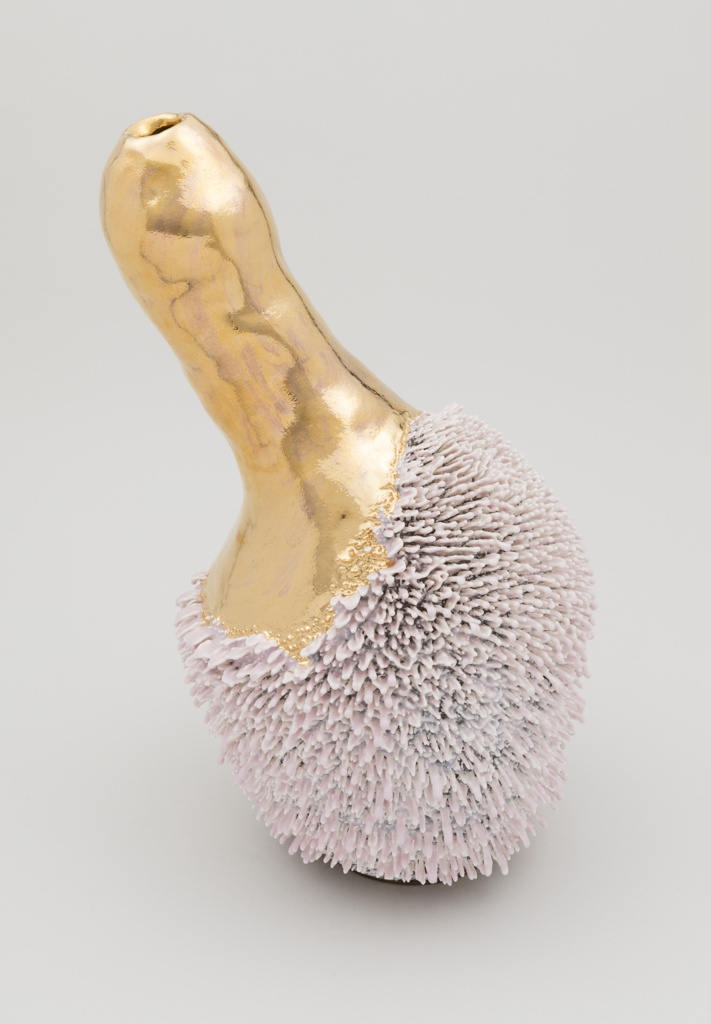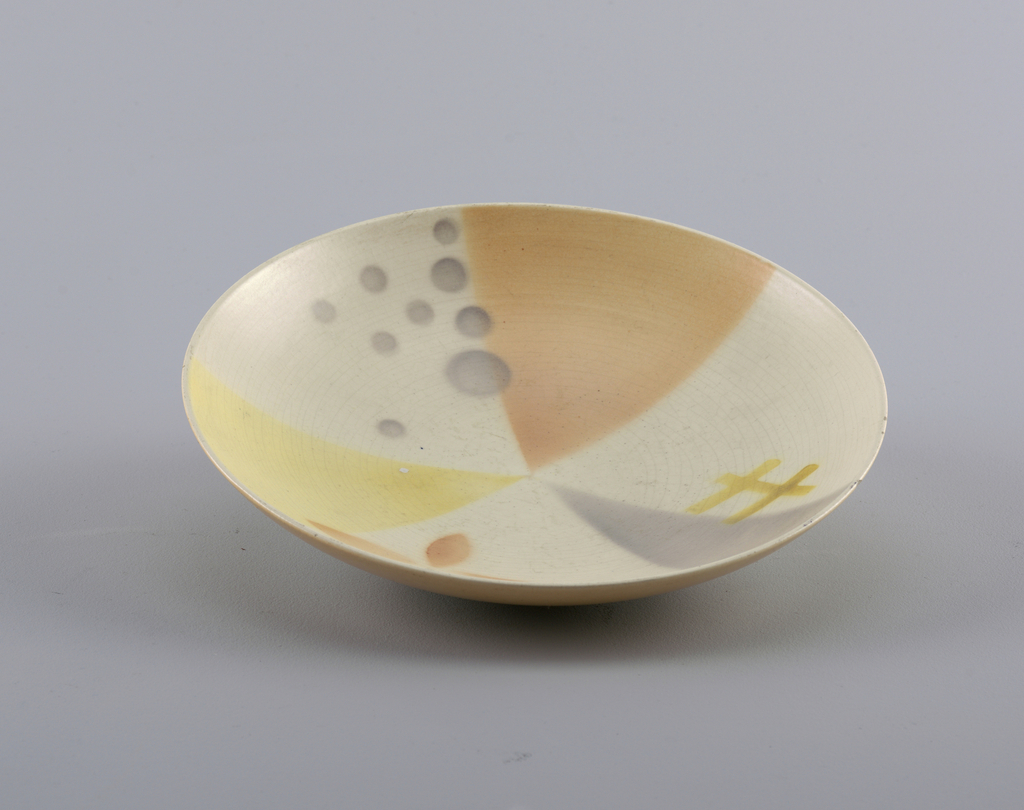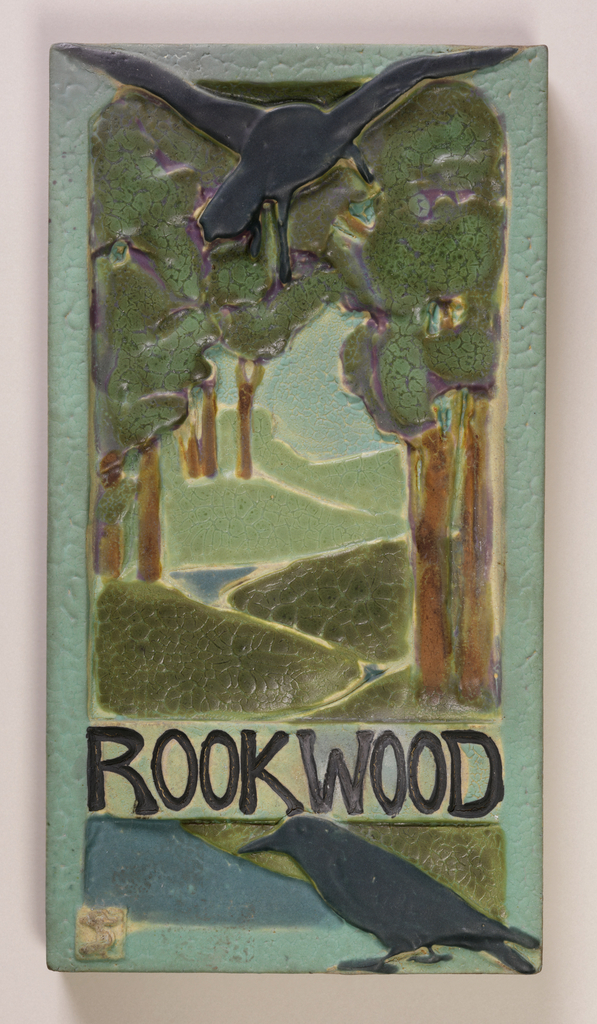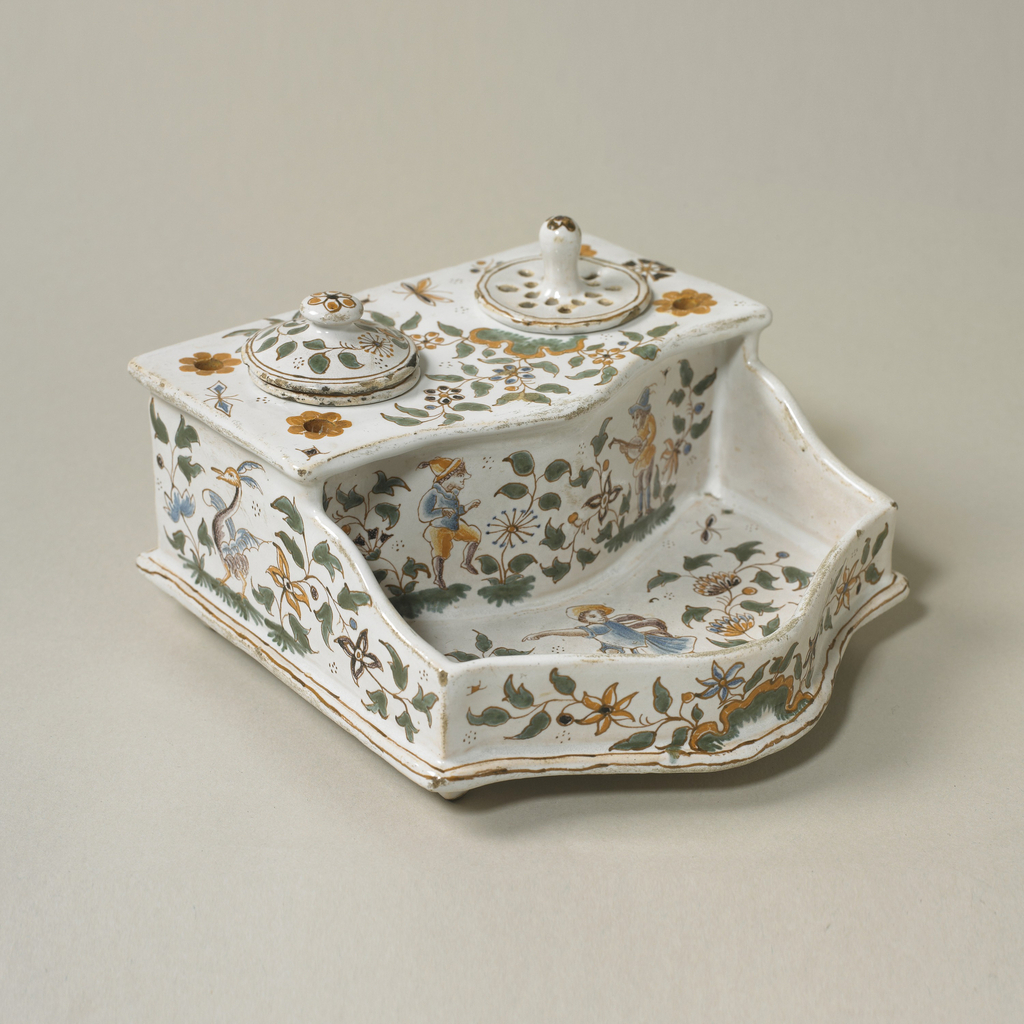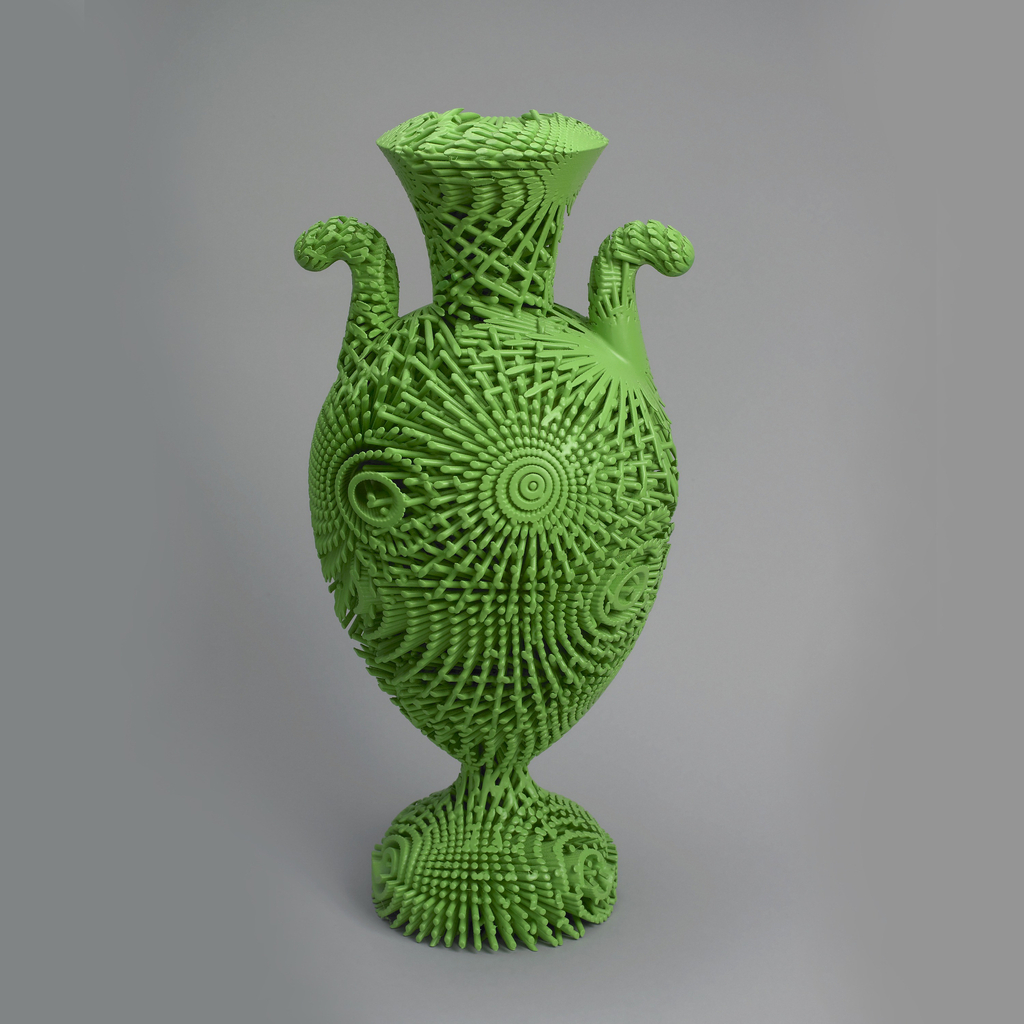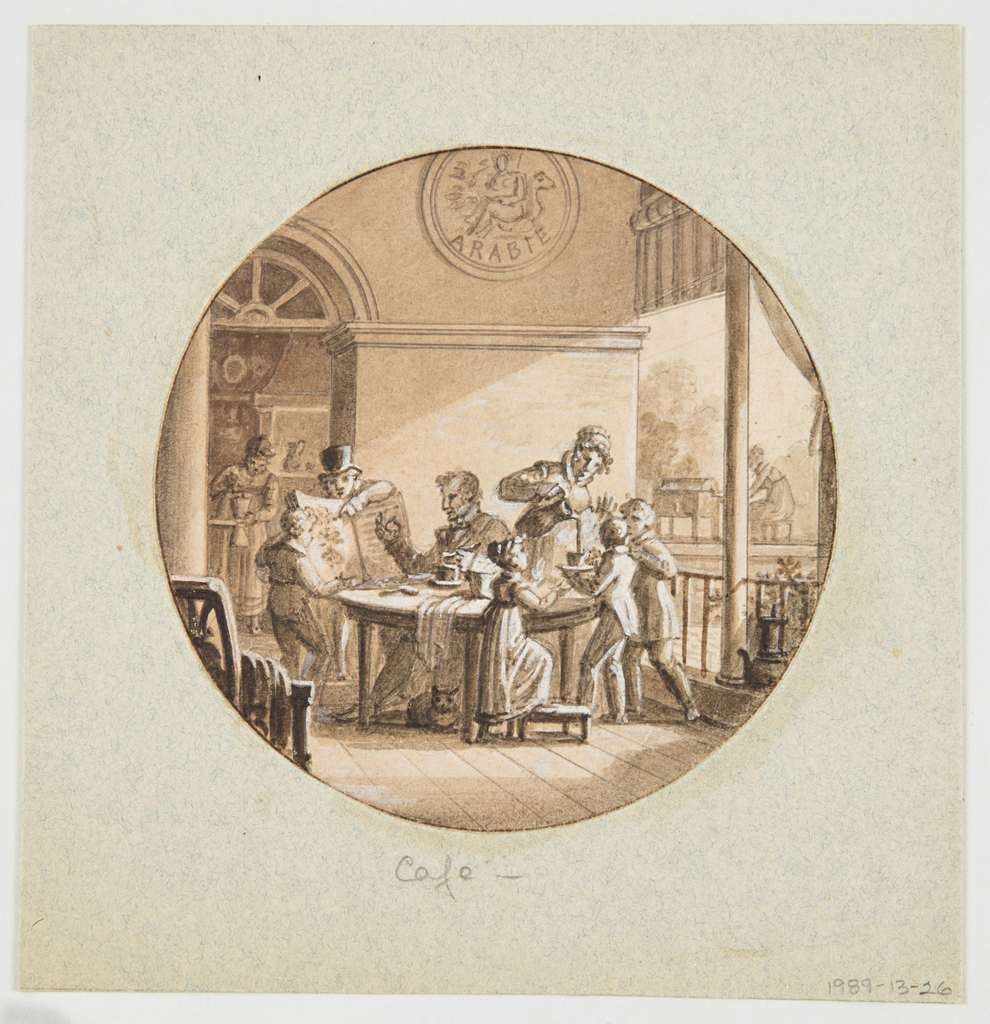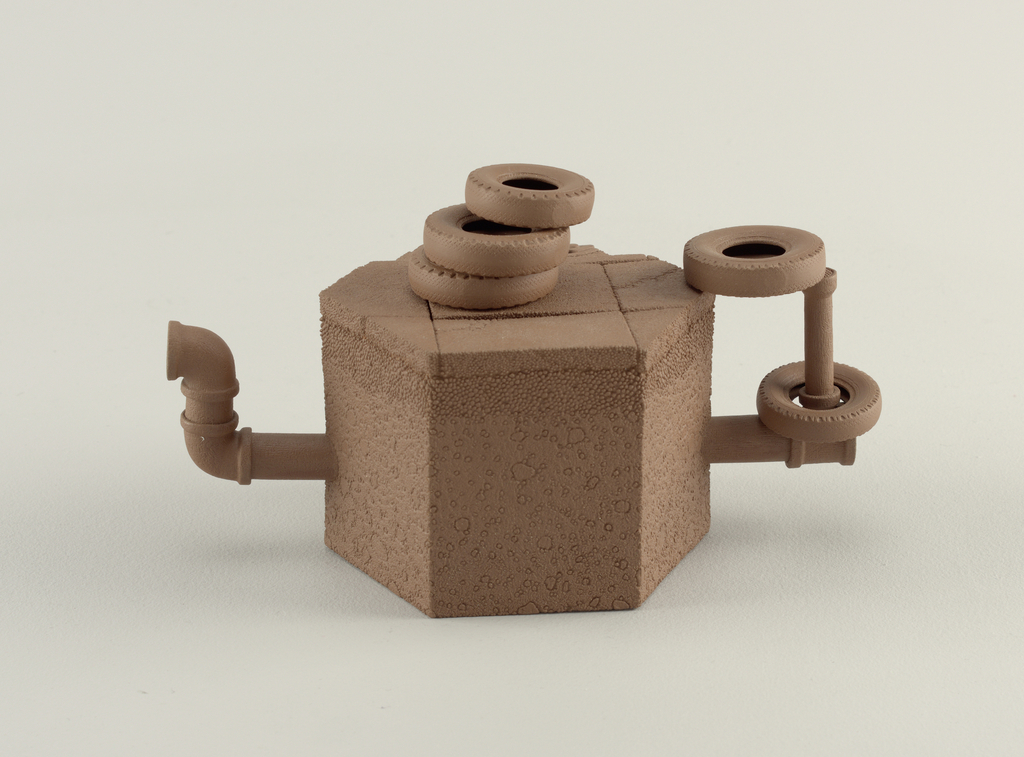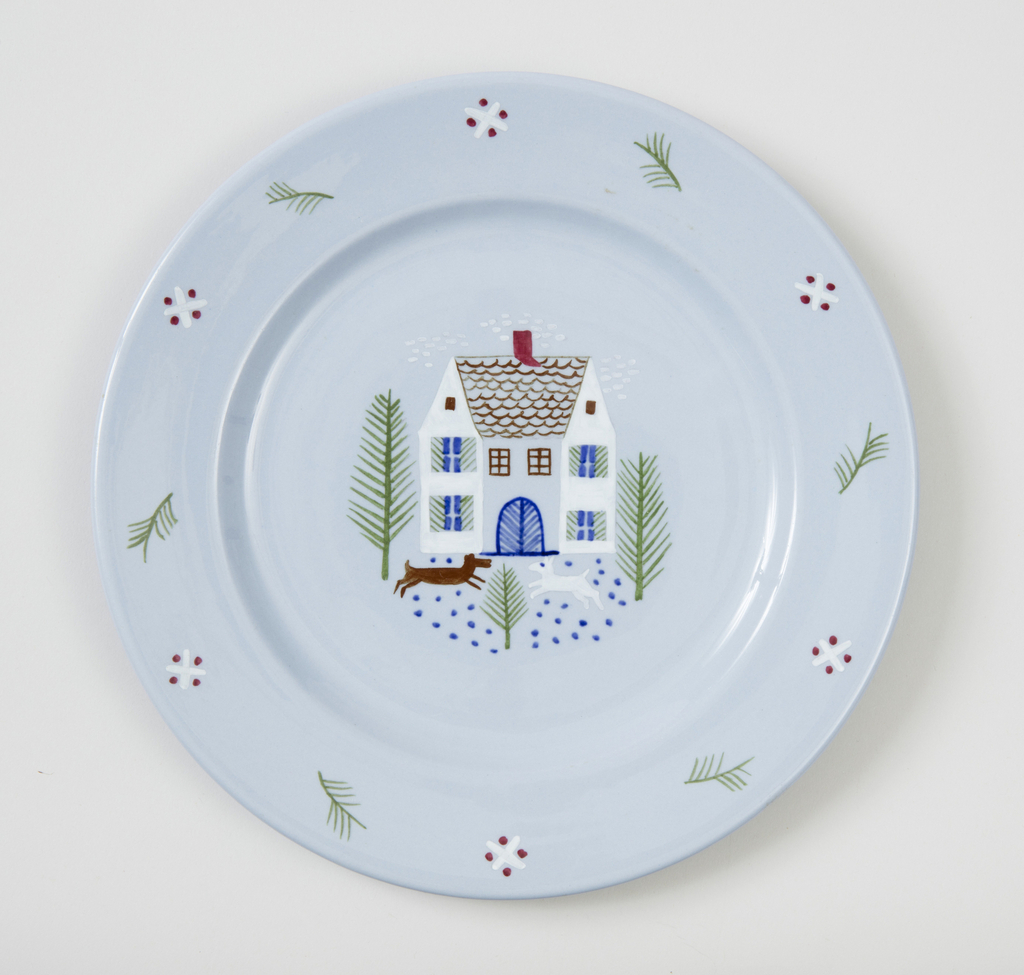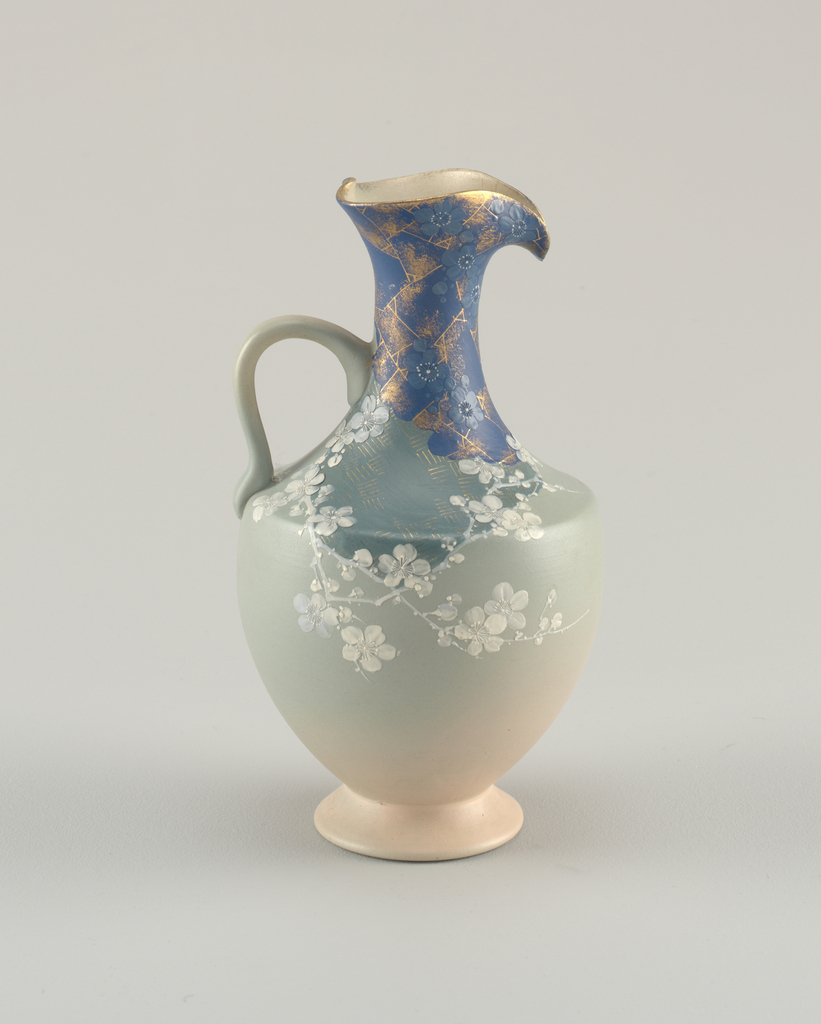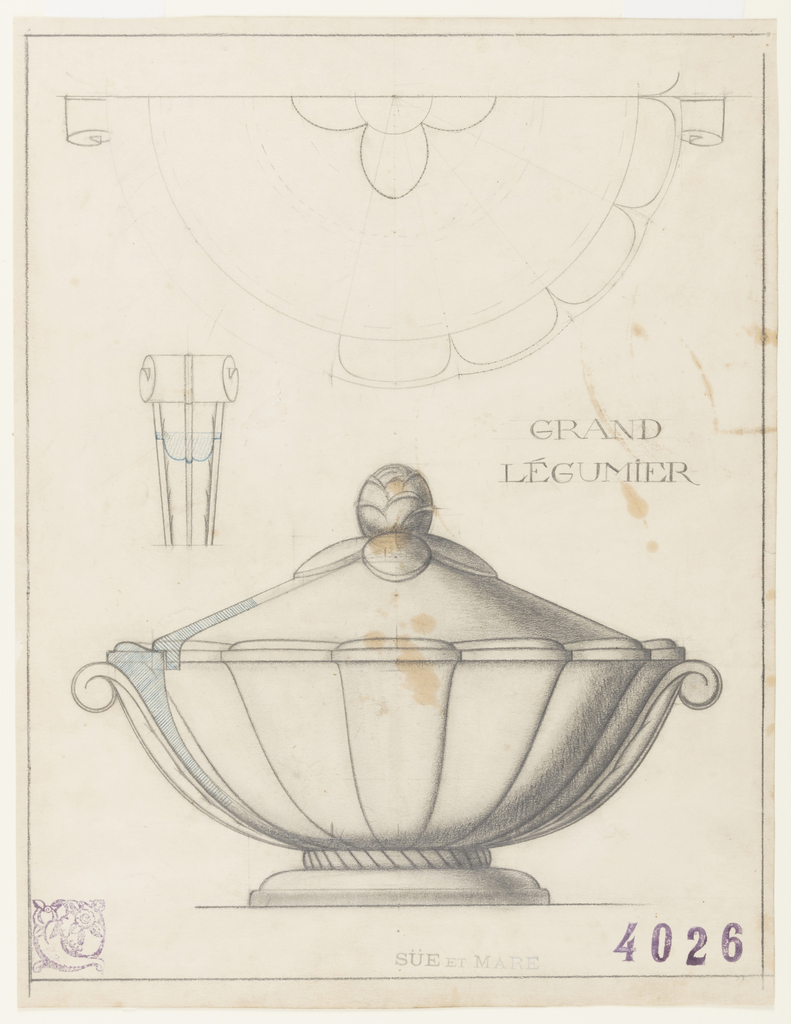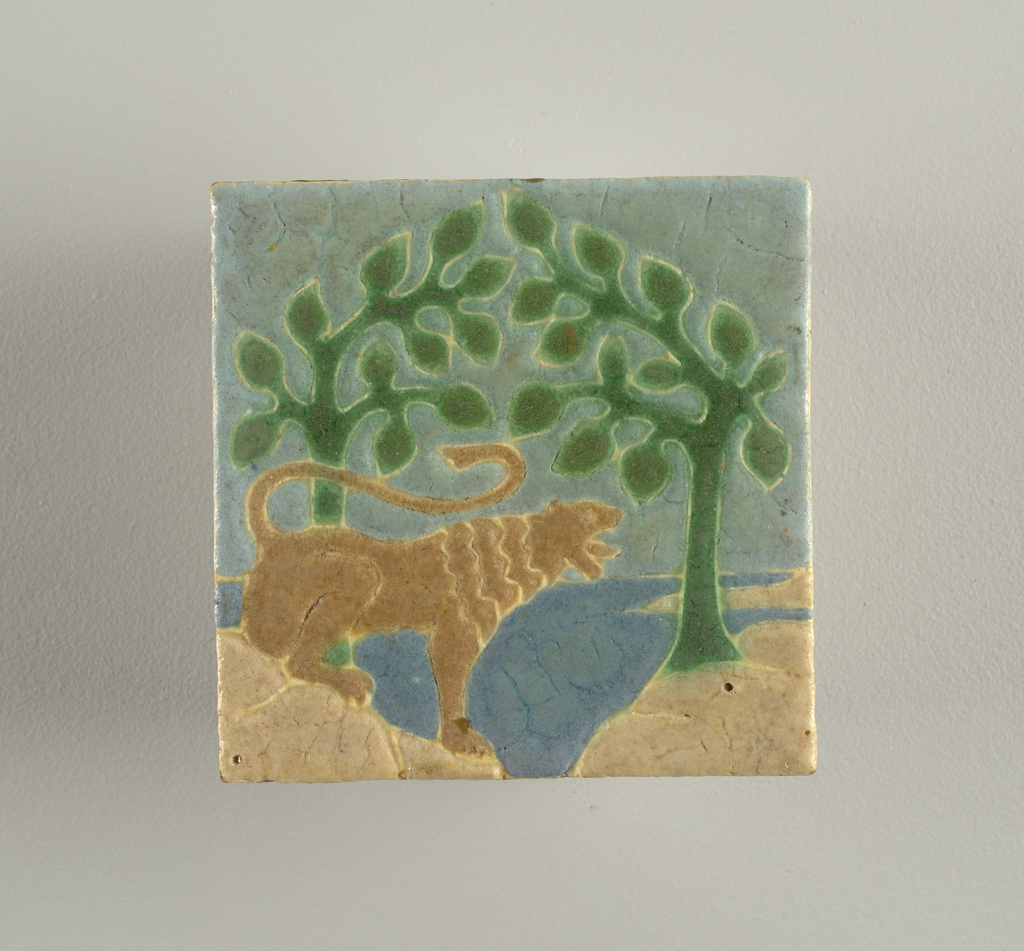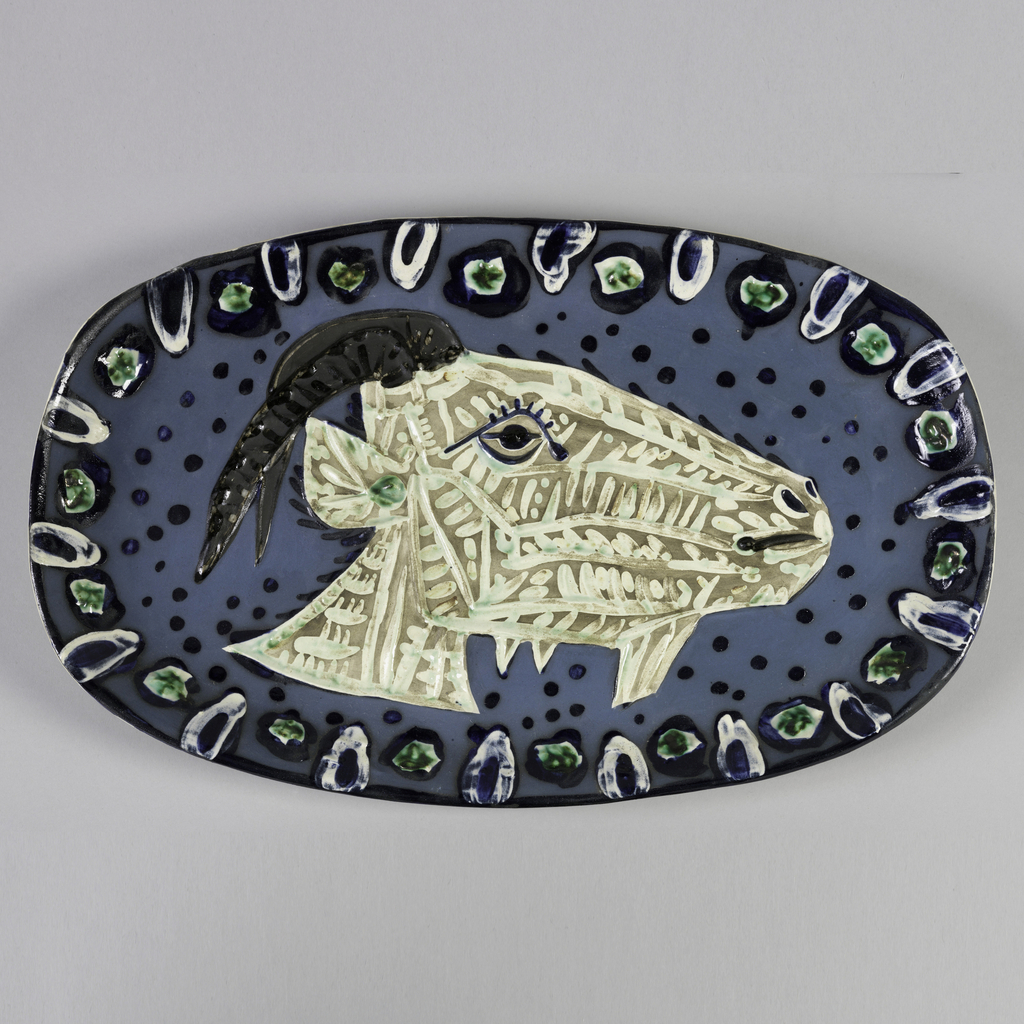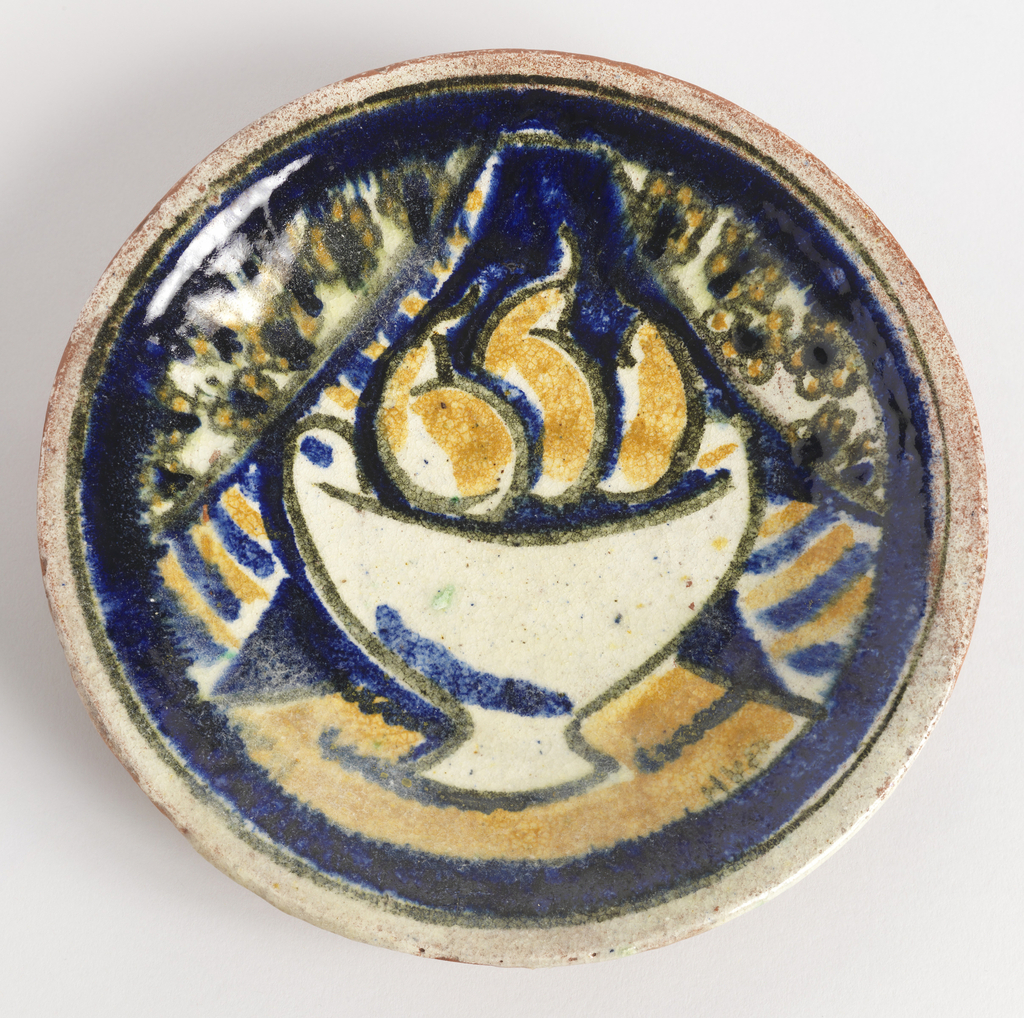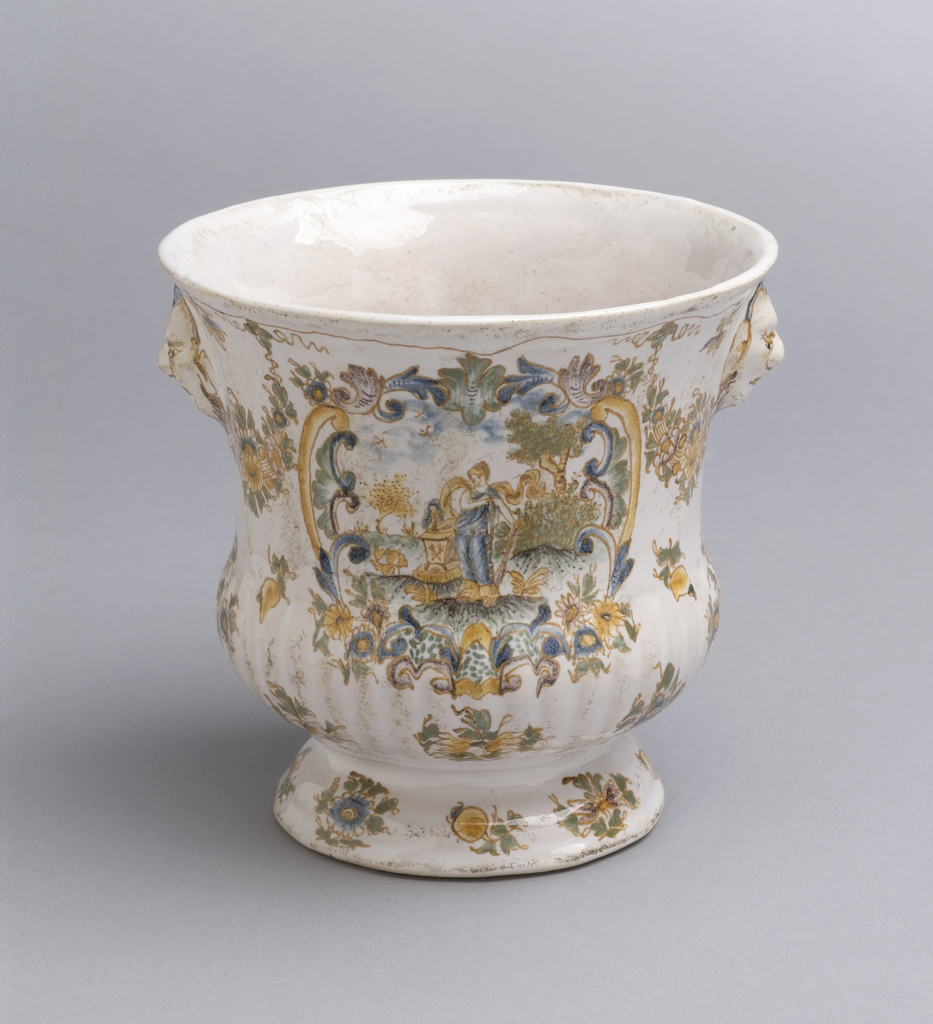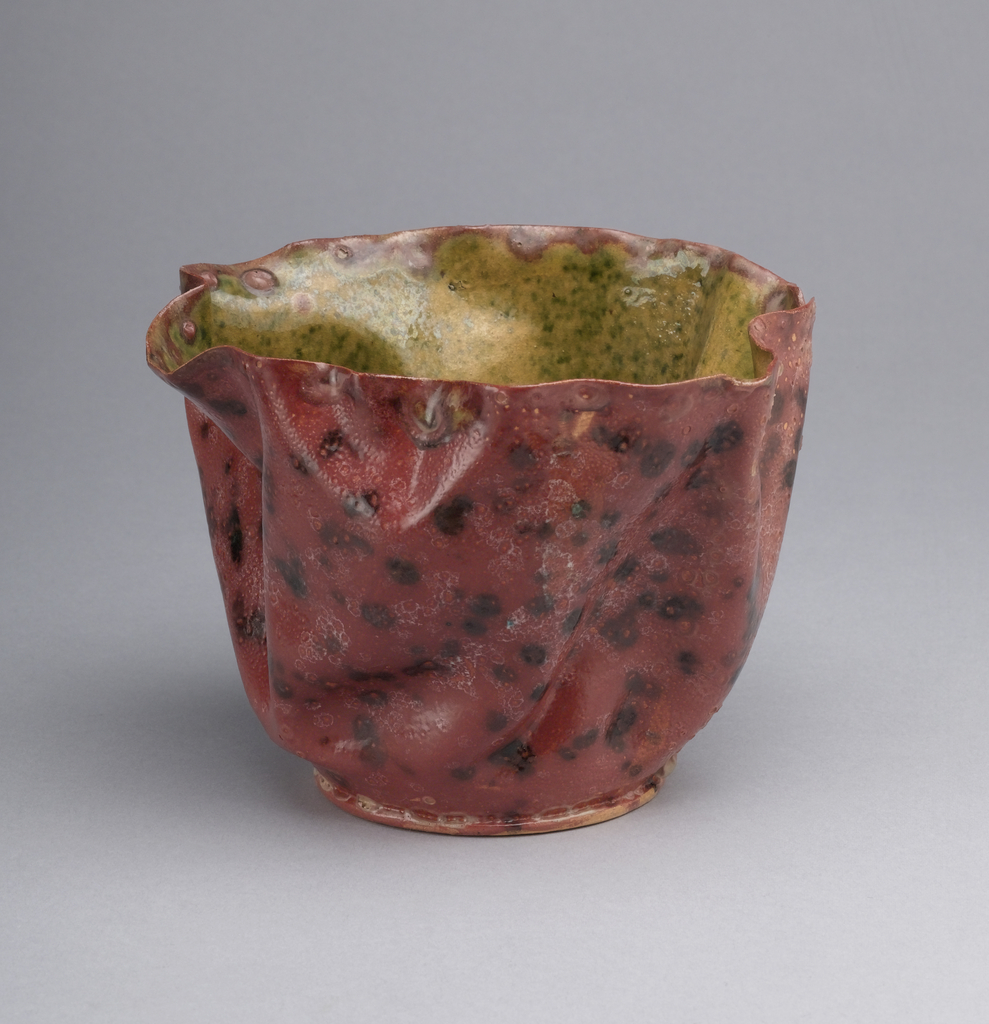In celebration of LGBTQ+ Pride Month, June Object of the Week posts highlight LGBTQ+ designers and design in the collection. Nature has a way of informing us—however we engage, we learn from its resilient processes. Nature also has a way of amusing, perplexing and delighting us with its complex and idiosyncratic forms. This edifying and...
A compressor rumbling. A nozzle hissing. The colorful geometric shapes decorating this otherwise straightforward dish were not painted by hand. Rather they were applied by a device novel to the world of ceramics: the airbrush. The important and prolific German designer, Martha Katzer (1897–1947), created this dish for the Karlsruhe Majolika Manufaktur (KMM) in Baden,...
From the archives, an Object of the Day blog post on Rockwood Pottery, one of the manufacturers featured in the exhibition Passion for the Exotic: Japonism.
Made of faience, a type of tin-glazed earthenware produced in France, this brightly colored inkstand held a pot for ink, a sander, pens, and various writing accouterments. Initially derived from Middle Eastern regions before the 9th century, faience developed in France during the 16th century; the French producers were largely influenced by Italian makers of...
To celebrate the opening of Saturated: The Allure and Science of Color (May 11, 2018-January 13, 2019), Object of the Day this month will feature colorful objects from the exhibition. For more than 20 years, Michael Eden has been a professional potter, often working in a traditional slipware technique. In 2006, he enrolled in a...
Café from the Service des Objets de Dessert, dated 1819-20, was drawn by Jean-Charles Develly as part of a table service for the Royal Sèvres Porcelain Manufactory. The factory was founded in Vincennes in 1740 and later relocated to Sèvres in 1756. In 1800, Alexandre Brongniart (1770–1847) was chosen as the administrator of the factory...
This teapot by the American ceramicist, Richard Notkin, draws its material influence from Chinese Yixing clay teapots. This type of clay is found in China in the city of Yixing in the Jiangsu Province, and is typically a red or brown color. While the clay has been used to create many different wares, the most...
Ilonka Karasz decorated this Buffalo China plate in about 1935, during the time that she worked as a designer for the company.[1] Founded by The Larkin Company, a soap factory, in 1901, Buffalo China produced soap dishes and other ceramics that were offered as premiums for purchasers of soap. The Larkin Company’s desirable premiums (including...
This pitcher was manufactured by Rookwood Pottery, an American art pottery company founded in Cincinnati, Ohio. Rookwood was begun by Maria Longworth Nichols in 1880 after she was enamored of the Japanese ceramics on view at the Centennial Exhibition in Philadelphia in 1876. Nichols originally proposed to her father that they bring a Japanese pottery—“workmen...
This design for a vegetable dish, now on view in The Jazz Age: American Style in the 1920s, blends classical forms with modern decorative details.
The Grueby Faience Company was founded in Revere, Massachusetts, in 1897. Grueby quickly grew in popularity and soon collaborated with Tiffany and Co. to produce ceramic lamp bases. Best known for their creation of a distinctive forest-green glaze, Grueby used this colorway on their iconic vases and tiles. Grueby garnered many awards, including accolades from...
In 1946, Pablo Picasso attended the annual pottery exhibition in Vallauris in the South of France. He was so impressed by the works he had seen that the artist met with the owners of Madoura, Suzanne and Georges Ramié, who offered him full access to their workshop in exchange for the rights to produce his...
Upon his return from military service in Europe in 1919, Henry Varnum Poor settled in an artists’ community in New City, New York where he purchased land and began single-handedly building a home called Crow House, named after the local birds who kept him company while he worked. As a struggling painter Poor was always...
This Jardinière was made of faïence, the French term for tin-glazed earthenware based on the name of a town in Italy-Faenza, with which its production is associated from the Middle ages and before. This example is from Moustiers, France, a town in the Alpine area in the southeast of France, where faïence has been made...
You might have to travel through the looking glass to find the Mad Hatter, but in the late nineteenth century, you’d only have to travel to Biloxi, Mississippi to find the self-titled “Mad Potter.” Just don’t try to use one of ceramicist George E. Ohr’s bowls, like the one seen here, at your un-birthday party. Ohr’s pottery...
